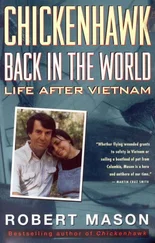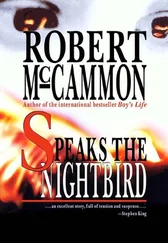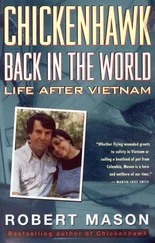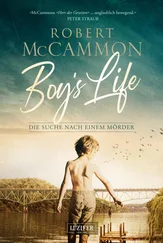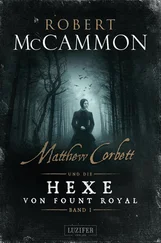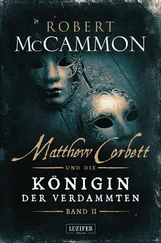When I wrote the book, I had no idea where any of the guys I was talking about had ended up. A few months before publication, though, I located Jerry Towler through the Department of the Army. When the book got to the stores, accompanied by television interviews, great reviews, and news stories of my subsequent time in prison, I started hearing from my friends. They all approved of the book. And they wanted to know why I hadn’t used their real names.
The answer was that my original editor at Viking thought that in our litigious society, we would get sued. I took his advice, and changed the names of my friends to protect their privacy and our butts. However, none of that was necessary. You have to lie about someone to get convicted of slander. I don’t lie in my memoir. Errors, yes.
Because of this new edition of Chickenhawk, I have the chance to mention real names and make some corrections. I served in two aviation units during my year in Vietnam. The Preachers really existed—B Company, 229th Assault Helicopter Battalion. I made up the name for the Prospectors. The Prospectors lived and performed their duties much differently than did my compatriots in the humongous First Air Cav. My descriptions of ambulance loads of Vietnamese call girls showing up at the club, the Prospectors stealing ice-making machines from the R&U compound, or the fact that maintenance was trading Hueys, reconstituted from wreckage, for trucks, among other incidents, really made my editor nervous. The real name of the Forty-Niners was the 48th Aviation Company, call sign Blue Stars. This independent aviation company operated all over Vietnam from 1966, when I joined them, right up until 1973 when they were stood down. In 1972, the Blue Stars were part of the infamous Lam Son 719 invasion of Cambodia, and paid dearly for it with lost pilots and crew. By the time of the Lam Son invasion, the North Vietnamese Army was not only using Soviet-built tanks as they invaded South Vietnam, they also had acquired heavy antiaircraft guns, which they used against our choppers, a fact that gives me sweaty palms just thinking about it. By 1970, pilots in my old units, the Blue Stars and Preachers, were figuring out how to avoid heat-seeking missiles! I consider myself lucky to have been a pioneer combat assault pilot with the Air Cav, in the good old days of spears and man-traps, rattling assault rifles, thudding 50-caliber machine-guns, whumping mortars and artillery.
I arrived at the Blue Stars just a week before Gerald Towler (Resler, because he’d been a wrestler in college). Jerry and I flew together in the Cav and the Blue Stars. A former crew chief, Tommy Dorsey (PFC Miller), told us recently that in the Preachers, we were known as The Kids. We were both fresh out of flight school and twenty-two years old in 1965. Most of the other Preacher pilots were career soldiers. By the time we got to the Blue Stars, we were old salts in the business of flying helicopters in combat, having logged three or four times as many combat hours as anyone in the unit. They had only arrived in-country in 1966.
This edition contains a photographic section showing some of the pilots I knew in the Cav, mostly the people from the 2nd Platoon.
Our trusty platoon commander, Captain Robert Stinnett (Shaker) was an avid chess player. There’s a photo of him playing a game with Captain Gillette (Gill) while Captain Hugh Farmer (Marston), calm as ever, practices his golf swing in the background.
Jerry Towler (Resler) and I flew together as WO-l’s both in the Cav and when we were infused to the 48th Aviation Company.
Lee Komich (Connors) and Dallas Harper (Banjo Bates) were a team, flying together often. Lee was also the company IP, and he helped me learn formation flying and the value of careful preflights, among many things.
I think Don Reynolds (Kaiser), the best gambler I ever knew, won enough at poker to buy a new car when he got home. Don became an airline captain for Eastern. He died of his second heart attack two years ago.
Woody Woodruff (Decker) and Howard Phillips (Morris), both from Arkansas, were like brothers. You can see it in their eyes in the photograph. Phillips, a skillful woodcarver, as well as combat assault pilot, is on the Wall in D.C.
Captain Duane Denton (Farris) was our section leader. He made Jerry and me line the walkways with rocks, and yet we still liked him. He died in an airplane crash, a training accident, not long after he got home.
Chuck Nay (Nate) is captured for eternity modeling a towel in our bath area in one of the photos. I guess Chuck can go ahead and sue me.
I don’t have any good photographs of Bob Sweazey (Wendell) or Ken Faba (Barber), another team that usually flew together in the Preachers. Sweazey was the amateur photographer and Vietnam historian, the one who kept reminding us that the French had been there, done that, and lost.
Captain Sherman was really Bruce Thomas. He’s a lot nicer than he was during the times I ended up talking about him in the book.
I say that Ron Fox, the pilot who had replaced me in the Cav, was killed. It was WO-1 Allan L. Cox, killed by a sniper bullet in the forehead on August 1, 1966. That same day, at the 48th, Ringknocker was walking the board trail across the beach at Tuy Hoa. A minute later, I’m watching our maintenance officer, Major Frank Gundaker (Major Steve Richards), trying to use a Huey to haul a junk rotor blade over the ocean and dump it. The blade is whipping around under him as Gundaker hovers forward. People on the ground are yelling, waving. The three maintenance guys along for the ride, PFC Ronald Russell, SP5 Ernest Shuman, and SP4 Donald Wallace, are waving back. The blade whipped up into the Huey’s main rotors. Gundaker’s ship tumbled out of the sky and burst into flames on the beach. Everyone on board was killed.
Crew chiefs and gunners made the whole combat assault thing work. They worked in the field, at night, all the time, keeping the choppers flying. There’s a photo of my door gunner, PFC Ubinski, in the back of our Huey. I called him Rubinski in the book. He was one of my best friends over there. I can’t find him these days.
Gene Burdick (Reacher) is shown running with the boot during the extraction of wounded when a remotely triggered road mine blew up their Jeep.
PFC Tommy Dorsey was hit by 50-caliber antiaircraft fire during the assault at LZ Bird in 1966. A single bullet was deflected by his chest protector, and the shards tore into his shoulder, tearing off his arm. I saw him bleeding in the back of his Huey, his arm hanging by a tendon. Tommy’s pilot called, said he was turning back to the aid station. The next time I saw Tommy was at an Ia Drang reunion. He has the arm. They sewed it back on. But he said it doesn’t work too well.
The crew chief I call Collins was actually Keith May nard, who was a big help when we needed parts, from wherever, to keep ‘em flying.
We were in Orlando at the VHPA twentieth annual reunion in July 2003, and there were Ringknocker and Sky King sitting at a table in the Blue Stars room. I pointed them out to my wife, Patience, and we walked over. Sky King, my old partner in the ice business at Dak To, looked up. His impish grin shone through the age gathering on his face. Then Ringknocker, who’s been a retired general for twenty years, looked up, smiling. “Mason, it’s great to see you!” he said. “What a book! I had no idea you had such an imagination.”
“Sir? It was my memoir.”
“Memoir?” Roper is grinning. “Where did you get all this stuff about stealing supplies from the R&U compound?”
“Or that myth about us trading Hueys we salvaged for trucks?” I ask.
“Yup. That one, too.”
Patience laughs. She says, “The ambulance load of whores?”
He shakes his head. “Not a chance.”
Читать дальше

